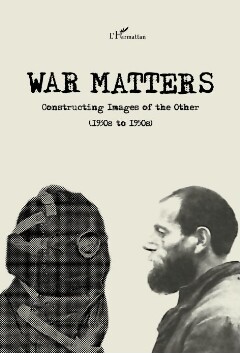Oldal 29 [29]
Constructing Images of the Other in Peace and War
much to contribute to a study of how images of the Other are constructed in
Eastern and Central Europe in peace and war.
Within Europe, British cartoonists have fairly clear shared conventions for de¬
picting their larger and more immediate neighbours such as the French, the Ger¬
mans and the Italians, but after that it gets a bit vague. This is true for the American
authors too. The Americans even use the compound term Bohunk (which carries
a derogatory meaning), combining ‘Bohemian’ and ‘Hungarian’ into one word to
describe Central Europeans generally. They would have problems understanding
Josef Lada’s illustrations to The Good Soldier Svejk which utterly depend on the
contrasting facial appearance of Czechs and Magyars (Hasek (1973 [1921-1923]:
231, 368-369). To the Americans they are all ‘squareheads’. Only when there is a
world conflict do East European countries appear in British cartoons and even then
as a generic undifferentiated single entity or a mere list of names. East and Central
Europeans have to be labelled with the names of their countries in writing, and
are often invisible, their people and symbols not shown at all (Bryant 2005: 26,
40) since there are no familiar, conventional images or symbols that the British or
American cartoonist can use—unlike, say, the unshaven, baguette-toting French¬
man in his beret and shirt with broad horizontal stripes; the German in lederhosen
or military helmet with his schmissen, his facial scar from mensur duelling; or the
dark, unshaven arm-waving Italian with a twirled moustache.
When a Soviet caricaturist draws the gallant Russian soldier in Figure 1 with
upright rifle and bayonet seizing the wrist of a Polish secret agent lurking in an
alleyway with knife and bomb, the British and the Americans will have no idea
of the villain’s nationality even though it is signalled by his thick upward-turning,
almost handle-bar, sz/achta and officer moustache and the eagle-badge on his cap.
Yet, the converse is also true. East and Central Europeans cannot make fine
distinctions about Britain. They use the words English and British interchangeably,
ignoring the existence of Wales and Scotland, the other two countries that make
up Great Britain, let alone Ulster. Aleksander V. Golubev (2010: 213) writing
about 1930s caricatures from Krokodil speaks of James Ramsay McDonald as “an
English politician, one of the founders and leaders of the Labour Party of Great
Britain”. McDonald was in fact a very Scottish Scotsman and the British war-lead¬
er David Lloyd George, who is quoted by the English-Polish historian Norman
Davies (1981: 393) that he would no more “give Upper Silesia to Poland than he
would give a clock to a monkey”, was not English either. For the creators of Brit¬
ish caricatures, Welsh and especially Scottish figures, often in distinctive national
garb (Lancaster 1978: 46-47), are as important as those of distinctive adjacent
nations in Eastern and Central Europe are to the cartoonists of those countries
(Demski et al 2013). Is there any cartoonist in Eastern or Central Europe who
knows how to depict the strange people of Lloyd George’s distant, little country
with its strange, impossible to learn, language, whose national identity is centred
on singing festivals? Slovak cartoonists even have problems depicting the Scots; the
27

